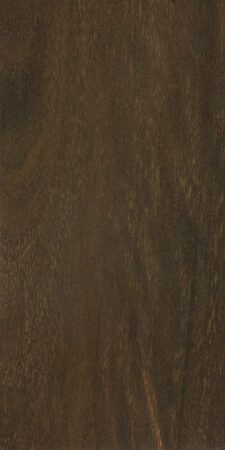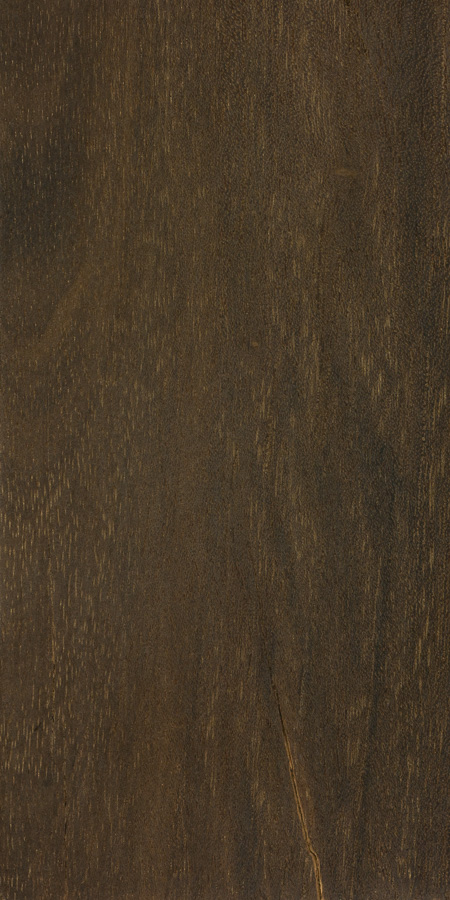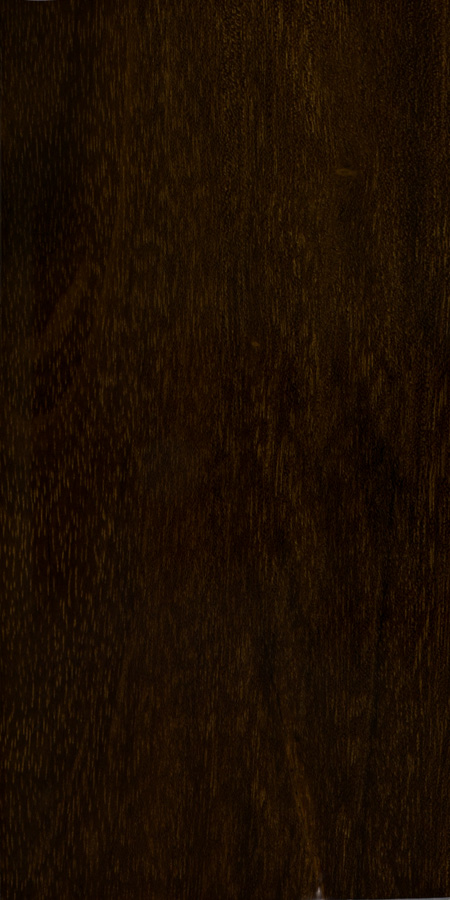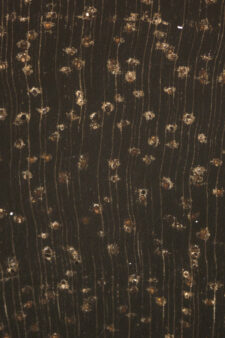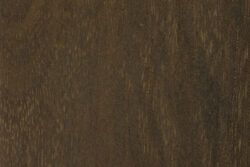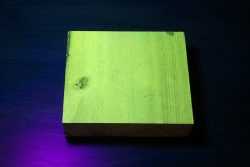Common Name(s): Yellow silverballi
Scientific Name: Aniba hypoglauca (syn. A. ovalifolia)
Distribution: South America (Guyana and Suriname)
Tree Size: 65-100 ft (20-30 m) tall,
1.5-2.5 ft (.5-.8 m) trunk diameter
Average Dried Weight: 38.1 lbs/ft3 (610 kg/m3)
Specific Gravity (Basic, 12% MC): .53, .61
Janka Hardness: 1,070 lbf (4,760 N)*
*Estimated hardness based on specific gravity
Modulus of Rupture: 9,720 lbf/in2 (67.0 MPa)
Elastic Modulus: 1,320,000 lbf/in2 (9.10 GPa)
Crushing Strength: 5,800 lbf/in2 (40.0 MPa)
Shrinkage: Radial: 4.6%, Tangential: 7.3%,
Volumetric: 12.1%, T/R Ratio: 1.6
Color/Appearance: Heartwood is golden brown, sometimes with an olive or greenish hue. Color darkens with age. The contrasting sapwood is light yellow.
Grain/Texture: Grain is straight, with a fine, uniform texture and good natural luster.
Rot Resistance: Rated as very moderately durable to durable; good termite resistance.
Workability: Easy to work with both hand and machine tools. Good bending properties. Turns and finishes well.
Odor: Has a pleasant, spice-like scent while being worked.
Allergies/Toxicity: Besides the standard health risks associated with any type of wood dust, no further health reactions have been reported with yellow silverballi. However, this may be due to the relative obscurity of the species. The closely related Aniba rosaeodora, as well as a number of other species in the Lauraceae family, have been reported to cause various allergenic reactions. (There is also a reasonable level of correlation between allergenicity and a species’ odor and biological resistance to decay fungi.) See the articles Wood Allergies and Toxicity and Wood Dust Safety for more information.
Pricing/Availability: Not commonly traded internationally, most uses of this wood species are restricted to its native range. Expect prices to be in the mid-range.
Sustainability: This wood species is not listed in the CITES Appendices or on the IUCN Red List of Threatened Species.
Common Uses: Furniture, veneer, plywood, interior millwork, boatbuilding, and turned objects
Comments: The wood pictured here is for thee closely related Aniba canellila. While the anatomy and grain patterns are very similar, the color in the images represented here is darker than what is average for this species.
Images: Drag the slider up/down to toggle between raw and finished wood.
There are currently no pictures of this exact wood species, but a similar species within the Aniba genus is being substituted (A. canelilla). If you’d like to contribute a wood sample for this webpage, please see the contact form for donating wood samples.
Identification: See the article on Hardwood Anatomy for definitions of endgrain features.
Porosity: diffuse porous
Arrangement: solitary and radial multiples
Vessels: large, few; tyloses common
Parenchyma: vasicentric
Rays: narrow; normal spacing
Lookalikes/Substitutes: Several other species from different genera within the Lauraceae (laurel) family—especially species in the Ocotea genus—are sold interchangeably as silverballi.
Notes: Yellow silverballi, like many Aniba species, will fluoresce a greenish color under blacklight illumination.
Related Content:

